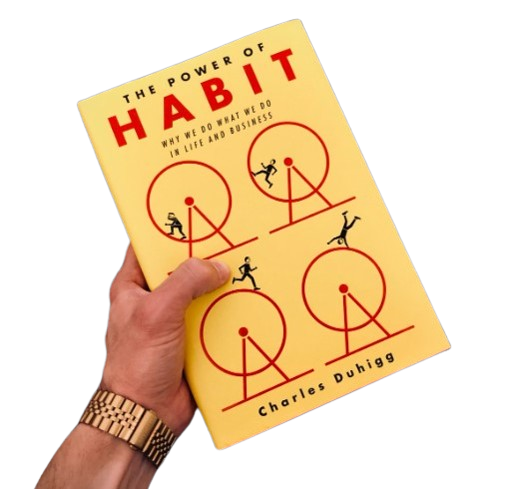Charles Duhigg’s The Power of Habit deals with the science of habits, as well as an understanding of their formation, functioning, and how to reshape them in order to create having a very dramatic impact on personal life as well as professional life.

Author: Charles Duhigg
The book dwells under three sections largely
This book, “The Power of Habit,” is divided into three main parts, all of which touch on habitual matters and the possibility of change through those habits.
The first part relates to individual habits and explains the habit loop, noting how knowing this can help change a behavior.
The second part relates to corporate habit formation by which companies or institutions use keystone habits to driving an efficient organization or growth in their operations.
The last section takes a look at social habits in relation to change in society and illustrates this point through examples drawn from historical events that have made or broken movements and cultures. All the three parts together form a quite excellent program for understanding and utilizing habits with which personal and professional transformation can be achieved.
The Habit Loop
Power Here, Duhigg elucidates the “habit loop,” the three components of which are a cue (which triggers a behavior), routine (the behavior itself), and reward (the benefit attained). People will, by understanding this loop, be able to shape undesirable habits.
The last aspect Power is positive reinforcement because the reward makes the brain connect that action to a positive result ensuring that it can happen again. Before long, the brain loops back to perform it involuntarily. Grasping this forms the basis of understanding the habit loop for one to discover triggers and routines with this understanding paving a clear pathway to subsequent changes and forming habits.
The Habits of Successful Organizations
It talks about how habits impact organizations and businesses. Using examples like Starbucks and Alcoa, The Power of Habit Duhigg explains how such keystone habits-Spreaders of good ripples-have made organizations work together and creatively innovate.
Identify Key Power Patterns To Identify And Leverage Context-Rich Patterns, To Set The Practice Across The Employee Behavior, Improve Team Dynamics, And Respond Quicker To Challenges. The success of an organization primarily hinges on such collective recognition and cultivation and adjustment of these habits.
Social Habits and Transformation
The Habits train how societies continue and can be harnessed for massive, sweeping change. For example, peer pressure and social habits help bring about action in giant groups, as in the case of the Civil Rights Movement.
Practical Applications
Curbing Bad Habits: Identify cues and rewards for the habit. Then alter the routine, keeping the reward the same.
Creating Habits: Start small, manageable routines connected with very clear, tangible rewards.
Leverage Keystone Habits: Focus only on those habits that have the highest chance of producing ripple effects in your life or organization.
Building Willpower: In small, steady steps, practice self-control to fine-tune the discipline of the mind over a period.
Why This Matters:
The book states that habits are not destiny; through conscious effort and knowledge, they can be reshaped. From self-improvement or making work more efficient to social change, The Power of Habit offers tools for harnessing the potential of day-to-day behaviors.
In The Power of Habit, habits have a tendency to influence us all the more in personal lives, organizations, cultures. In fact, he has begun to draw an emphasis that will ultimately make him realize habits are not common locks that will open and shut some of them forever but are instead habits that could be reshaped through understanding the habit loop into use of keystone habits, even ingenuity in willpower. The book propounds a brilliant structure to advocate recognition that Behavior-forming features can be transformed into behaviors that can lead to meaningful changes.
You can find this book in PDF format below.
Related books click here





